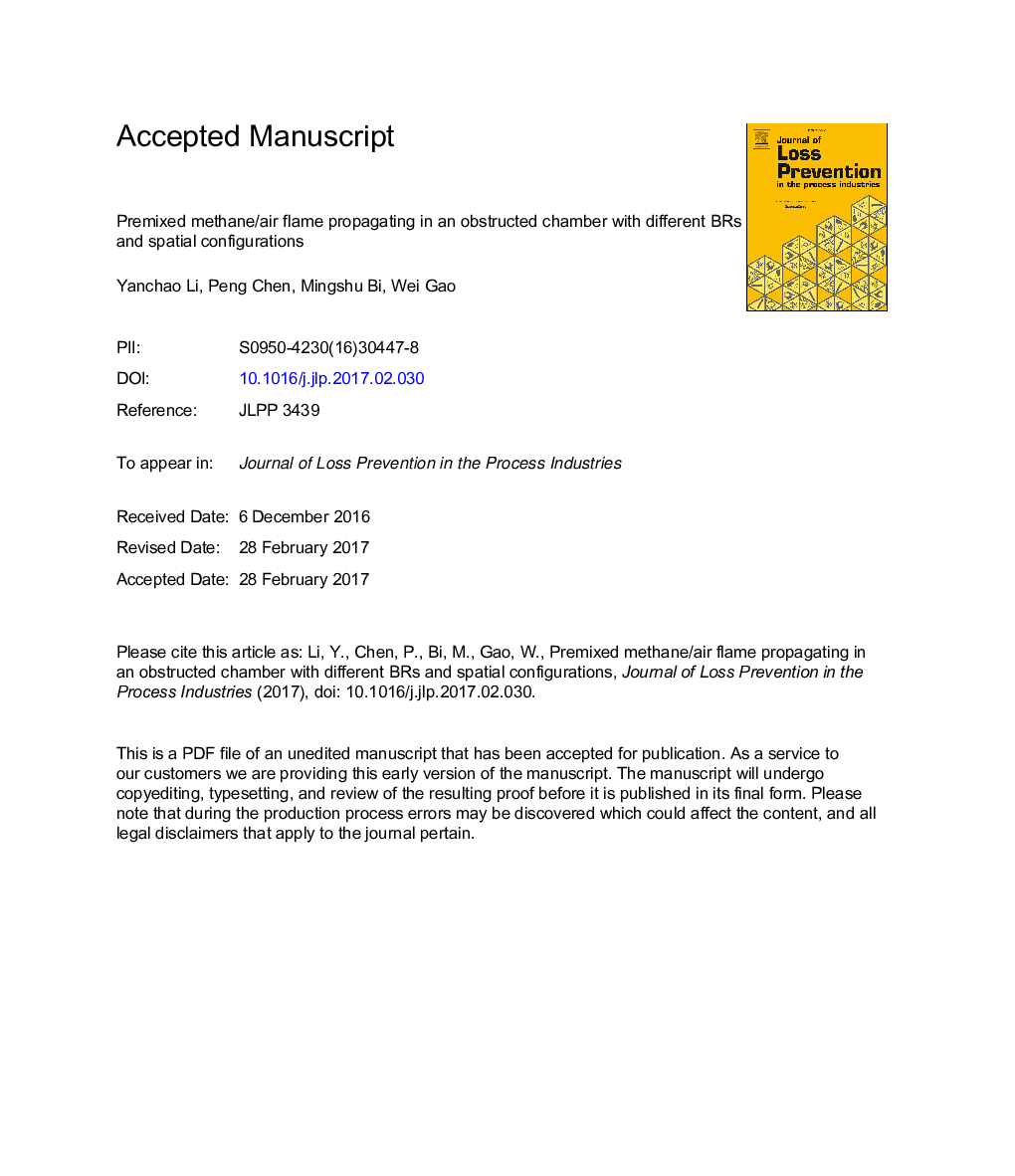| Article ID | Journal | Published Year | Pages | File Type |
|---|---|---|---|---|
| 4980493 | Journal of Loss Prevention in the Process Industries | 2017 | 19 Pages |
Abstract
The effects of obstacle blockage ratio (BR) and spatial configurations on premixed methane/air flame propagation are experimentally investigated by the high-speed video photography and pressure transducer. The results demonstrate that the flame shape changes, flame tip speed and deflagration overpressure in the initial stage are not affected by the obstacles with different BRs and spatial configurations. After the moving flame feels the obstacle, flame tip speed and overpressure increase significantly with increasing obstacle BR for center-installed obstacle. The first peak value of flame tip speed with bottom-installed obstacle is slightly larger than that with center-installed obstacle. Two-peak structure is observed in the curves of flame tip speed, and overpressure variation depends strongly on the second flame acceleration, which also explains the fact that deflagration overpressure with bottom-installed obstacle is smaller than that with center-installed obstacle with time ranging from t = 36 m to t = 90 m.
Related Topics
Physical Sciences and Engineering
Chemical Engineering
Chemical Health and Safety
Authors
Yanchao Li, Peng Chen, Mingshu Bi, Wei Gao,
